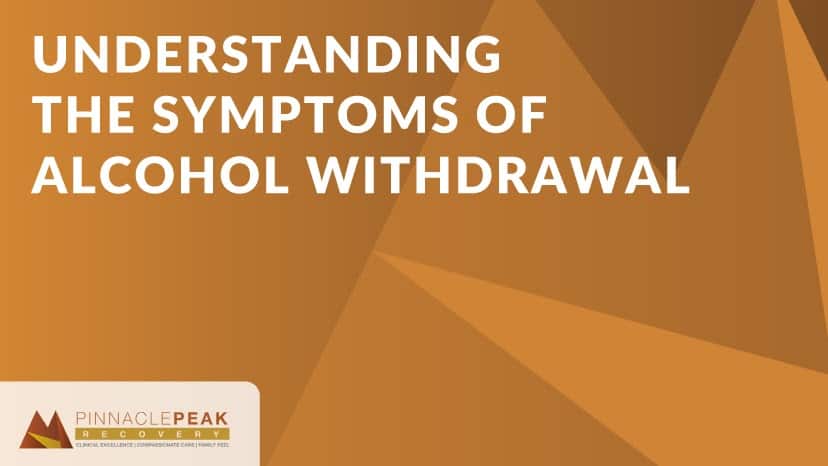I’ve been drinking for more than 20 years. I’ve tried and tried to get sober, but I just haven’t been able to.
I feel like I’m losing everything. I don’t know if anyone likes being around me anymore. I don’t even know if I like myself.
I have a great job, but as I’ve gotten older, I’ve noticed alcohol has started to affect the work I’m doing. Alcohol really has taken its toll on every aspect of my life.
Like I said, I’ve tried to get sober before. Every time I try to walk away from alcohol, the withdrawal symptoms are just too much to handle. I end up drinking again just so I don’t feel sick.
I’m at the point now where I just don’t know if I can ever live a life free from alcohol. It feels like I’m stuck in quicksand, and I’m slowly but surely being pulled under. And there’s no one there to pull me out. Am I really alone? Is this just who I am? What if I can’t get sober? Is there help out there for me?
Stories like this are incredibly common. If you feel this way, you’re not alone. Alcohol doesn’t have to control your life. You can get sober and return to a normal life. Sometimes, it takes more than one or two tries, and that’s normal too.
Millions of people battle alcohol use disorder on a daily basis. The first step toward recovery is getting past those symptoms of withdrawal that prevent you from moving forward.
So, let’s take a look at alcohol withdrawal and how you can address it.
What Does Alcohol Withdrawal Look Like?
According to the U.S. National Library of Medicine (NLM), “Alcohol withdrawal refers to symptoms that may occur when a person who has been drinking too much alcohol on a regular basis suddenly stops drinking alcohol.”
Alcohol withdrawal typically occurs for adults, but it can also affect teenagers and children. The more you drink, the better the chances are of you having withdrawal symptoms. Withdrawal symptoms can be severe if you have other medical issues.
Usually, withdrawal symptoms will begin around eight hours after your last drink. Typically, symptoms peak within 24-72 hours, the NLM says.
Symptoms of alcohol withdrawal can include:
- Anxiety
- Irritability
- Fatigue
- Nightmares
- Problems thinking
- Mood swings
- Depression
- Headache
- Problems sleeping
- Nausea
- Vomiting
- Rapid heartbeat
- Tremors
- Loss of appetite
- Sweating
In order to address symptoms of alcohol withdrawal, a professional detox is recommended. Withdrawal symptoms can be significantly reduced in a medically supervised detox center.
Delirium tremens, which is a severe form of alcohol withdrawal, can cause changes in the mental or nervous system.
The NLM explains, “It occurs most often in people who have a history of alcohol withdrawal. It is especially common in those who drink 4 to 5 pints (1.8 to 2.4 liters) of wine, 7 to 8 pints (3.3 to 3.8 liters) of beer, or 1 pint (1/2 liter) of ‘hard’ alcohol every day for several months. Delirium tremens also commonly affects people who have used alcohol for more than 10 years.”
Symptoms of delirium tremens can include:
- Fever
- Seizures
- Agitation
- Hallucinations (seeing or hearing things that aren’t real)
- Severe confusion
Delirium tremens is a medical emergency that requires immediate treatment.
What Is Alcohol Use Disorder?
Right now, around 18 million Americans in the United States have alcohol use disorder (AUD). The NLM just link the first time it’s mentioned above says, “This (AUD) means that their drinking causes distress and harm. AUD can range from mild to severe, depending on the symptoms. Severe AUD is sometimes called alcoholism or alcohol dependence.”
Signs of AUD are we don’t use disease terminology in any of our writing:
- Craving — a strong need to drink
- Loss of control — not being able to stop drinking once you’ve started
- Negative emotional state — feeling anxious and irritable when you are not drinking
If you think you have AUD, you should look for the following symptoms:
- Spending lots of time recovering from drinking
- Wanting to stop drinking but you are unable to
- You continue drinking despite the problems it’s causing you with family and friends
- Not participating in activities you once enjoyed because of alcohol
- Drinking more than you intended
- Drinking longer than you intended
- Finding yourself in dangerous situations because of alcohol
- Feeling strong cravings to drink
- Drinking is causing problems with your work life
- Drinking despite feeling depressed or anxious
- Drinking more to feel the effects of alcohol
- Experiencing withdrawal symptoms when you stop drinking
The more symptoms you’re having, the more severe your AUD may be.
What Is Excessive Drinking?
Excessive drinking consists of either binge drinking or heavy drinking, or both.
According to the National Institutes of Health (NIH), “Adults of legal drinking age can choose not to drink or to drink in moderation by limiting intake to two drinks or less in a day for men and one drink or less in a day for women, when alcohol is consumed. Drinking less is better for health than drinking more.”
Binge drinking is defined by the NIH as a pattern of drinking that causes someone’s blood alcohol concentration to reach 0.08% or higher. This usually happens when five or more drinks are consumed by a man or four or more drinks are consumed by a woman in the span of two hours.
Heavy drinking occurs when a man has more than 14 drinks a week or a woman has more than seven drinks a week.
Excessive drinking doesn’t necessarily mean you have an AUD, but both binge drinking and heavy drinking can increase the risk of developing AUD.
There is a thin line between excessive drinking and AUD. If alcohol is causing problems in your life, and you just can’t seem to move on from it, it’s more than likely time to leave it behind. Just like you’d seek guidance from someone if you were struggling at work or school, seeking professional treatment to address your problems with alcohol can be extremely beneficial.
How Dangerous Can Drinking Too Much Be?
You’ve probably heard this before, but drinking too much alcohol can have lasting, negative impacts on your health.
When it comes to health risks, the Centers for Disease Control and Prevention (CDC) lists both immediate and long-term risks. Immediate risks include:
- Injuries from things like motor vehicle accidents and falling
- Problems with pregnancy
- Finding yourself in situations that involve violence
- Alcohol poisoning
Long-term effects may include:
- Heart disease
- High blood pressure
- Stroke
- Liver disease
- Cancer of the throat, breast, liver, colon, voice box, or esophagus
- Weakened immune system
- Problems learning
- Mental health disorders
- Problems with family or friends
- Alcohol dependence
Some people shouldn’t drink at all due to the risks associated with alcohol, including:
- People planning to drive
- Those engaging in activities that require attention and coordination
- People younger than 21
- Those with certain medical conditions
- Those taking certain medications
- Those recovering from alcohol use disorder
All in all, if you avoid drinking too much, you can lower the health risks associated with alcohol. Do not let someone pressure you into drinking, and remember, if you do think you have a problem, ask for help.
Identifying Co-Occurring Disorders
Over the years, it’s become clear that co-occurring disorders are common for those battling a substance use disorder. Having co-occurring disorders means that someone has a substance use disorder and a mental health disorder at the same time.
The NIH says, “Researchers have found that about half of individuals who experience a substance use disorder during their lives will also experience a co-occurring mental disorder and vice versa. Co-occurring disorders can include anxiety disorders, depression, attention-deficit hyperactivity disorder (ADHD), bipolar disorder, personality disorders, and schizophrenia, among others.”
Just because you may have co-occurring disorders doesn’t necessarily mean one caused the other, but they can.
Sometimes, there are common risk factors that affect both substance use disorders and mental health disorders. Since both disorders can be passed down from generation to generation, genetics plays a role along with life experience and social environment..
There’s also the possibility that your mental health disorder contributed to your substance use disorder. For example, those with a mental health disorder may turn to substances to “self-medicate” to escape whatever problem(s) they’re dealing with. This can include things like anxiety, depression, and post-traumatic stress disorder (PTSD).
On the other hand, a substance use disorder could contribute to a mental health disorder. Some substances can cause changes within the brain that may cause you to develop a mental health disorder.
Drinking in the United States
Did you know that alcohol is the third-leading cause of preventable deaths in the country?
Arizona is no stranger to alcohol use disorder. The state currently ranks 21st for excessive alcohol use in the United States with 17.2% of adults saying they drink excessively. These numbers highlight that more work needs to be done.
Thankfully, professional treatment is available to help people overcome alcohol use disorder. One of the first signs of AUD is the withdrawal symptoms we discussed earlier.
If you constantly find yourself recovering from a night out drinking, dealing with alcohol cravings, or struggling to leave alcohol behind despite wanting to, there’s a good chance you either have alcohol use disorder or are dependent on alcohol. Either way, finding the right treatment center for you can be extremely helpful.
You Have the Power to Leave Alcohol Behind
Even if you’ve tried to get sober before and failed, do not give up. Your next attempt may just be the one that turns your life around. In fact, the average person struggling with AUD takes one or two attempts before they find lasting recovery.
The road to recovery is one no one should ever have to walk alone. If you need help, do not be afraid to reach out. You have nothing to be ashamed of or to be embarrassed about.
There is a life beyond alcohol. You deserve to feel the joys that come along with being sober. You can take your life back.
Right now, you may be filled with doubt and negativity, but there is a light at the end of the tunnel. Recovery is possible, and you have what it takes to get there. Someone, somewhere has gone through exactly what you’re going through, and if they can complete the road to recovery, so can you.
Pinnacle Peak Is Here for You
“If you’re trying to achieve, there will be roadblocks. I’ve had them; everybody has had them. But obstacles don’t have to stop you. If you run into a wall, don’t turn around and give up. Figure out how to climb it, go through it, or work around it.” — Michael Jordan
Pinnacle Peak Recovery’s alcoholism withdrawal treatment program, located in Scottsdale, Arizona, typically begins with alcohol detox that lasts around 10 days to provide you with the safest and most comfortable withdrawal experience possible.
You will then receive personalized alcohol addiction treatment tailored to your unique needs. We have effective programs led by experienced professionals to help you learn new life skills that will benefit you on the road to recovery. You’ll also learn what contributes to your alcohol use disorder and how to manage it.
Last, but certainly not least, you will be taught the coping skills you need to prevent relapse and live a sober life.
At Pinnacle Peak Recovery, our passionate team of care providers uses cutting-edge treatment methods and therapies. Call us today at (866) 377-4761.
Frequently Asked Questions
What are the symptoms of alcohol withdrawal?
Symptoms of alcohol withdrawal can include:
- Anxiety
- Irritability
- Fatigue
- Nightmares
- Problems thinking
- Mood swings
- Depression
- Headache
- Problems sleeping
- Nausea
- Vomiting
- Rapid heartbeat
- Tremors
- Loss of appetite
- Sweating
Symptoms usually begin about eight hours after the last drink and peak around 24-72 hours. It’s highly recommended that people seek professional treatment to combat the symptoms of alcohol withdrawal. Those who go through a professional detox are more likely to continue their treatment and leave alcohol behind for good.
Is AUD dangerous?
AUD (alcohol use disorder) and excessive drinking can both be dangerous. There are various health risks that come along with drinking too much. Not only can you find yourself in dangerous situations due to drinking too much alcohol, but down the road, you may find yourself battling serious health problems. Those who drink too much may be at a higher risk of developing certain cancers, heart disease, liver disease, and more.
What are co-occurring disorders?
Having co-occurring disorders means someone has a substance use disorder and a mental health disorder at the same time. The National Institutes of Health says co-occurring disorders can include anxiety disorders, depression, attention-deficit hyperactivity disorder (ADHD), bipolar disorder, personality disorders, schizophrenia, and more.




